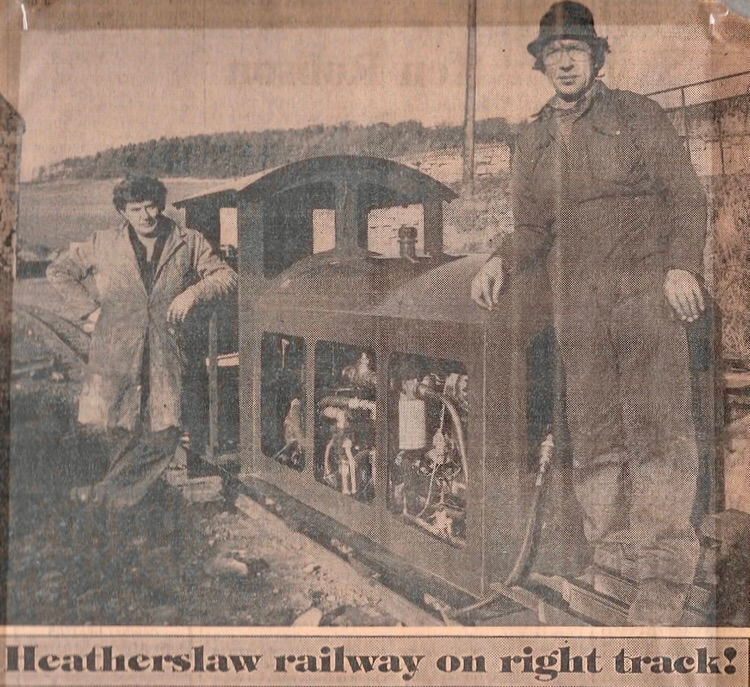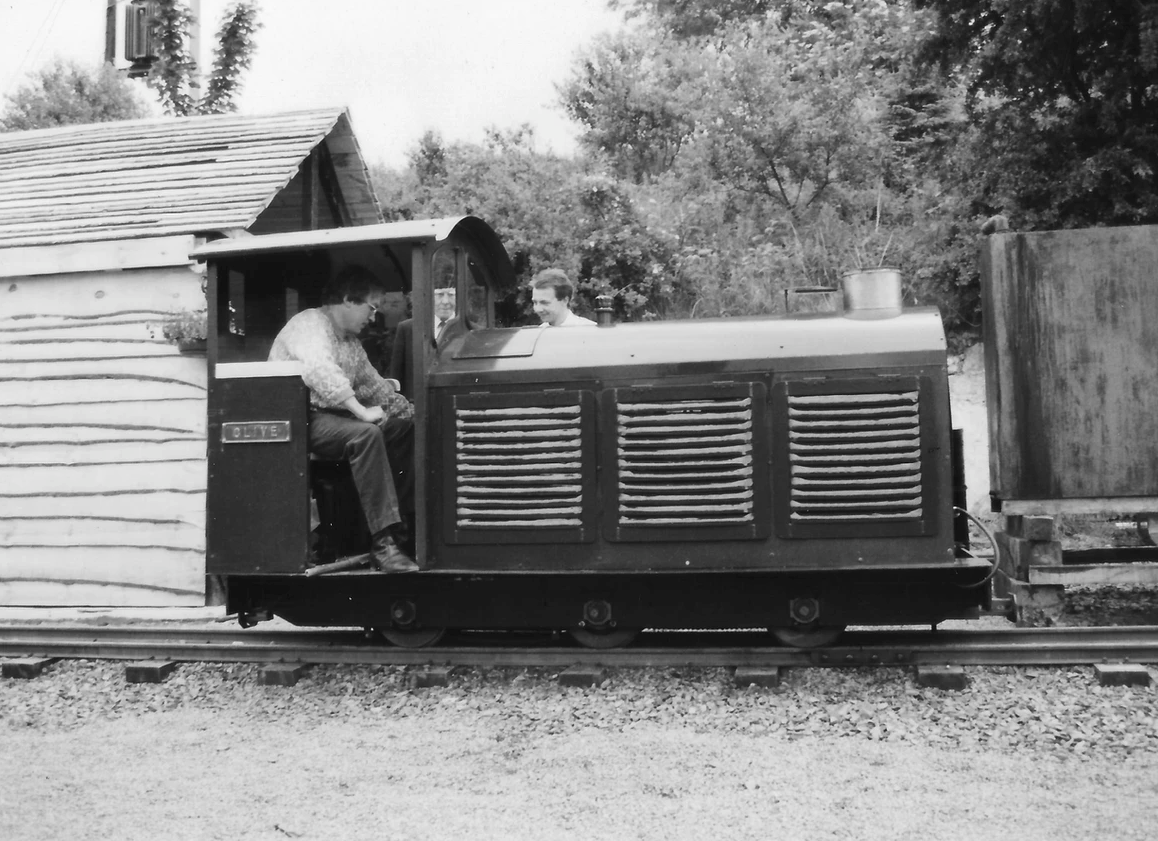
The History Of Heatherslaw Light Railway
The question we often get asked is what is the history of the line? Well, the answer is it was purely fields before Neville Smith came up with the idea of a railway. He was an engineer who had built locomotives in both 5 and 7 1/4 inch gauge, but harboured the ambition of building a passenger carrying railway in 15 inch narrow gauge. It was obviously meant to be, as the late Lord Joicey was looking for a project to enhance tourism on Ford and Etal Estates. Plans were submitted and a route was chosen. The locomotive “Lady Augusta” (0-4-2 Tender Engine) was commissioned from the Ravenglass and Eskdale Railway, while the diesel locomotive Clive and the six original coaches were manufactured on site by Neville Smith and his business partner Mr. Sid Ford.
The Build
The station at Heatherslaw is built on the site of the old Ford and Etal sawmill which had suffered a fire in the mid 1980’s, before being moved to a new site at Letham Hill. The site at Heatherslaw was cleared, new buildings, a turntable and station track work where laid. The track bed was excavated and levelled by a contractor, with the ballast and track laid using a track gang made up of local labour who worked every weekend for six months to enable the railway to start running in the summer of 1989. The original track was 1.25 miles long and cut directly across the Letham Haugh to Etal village. In the winter of 2003-2004, the track was 'extended' to its present length of 2 miles following the course of the River Till around the outside of the Letham Haugh. The original stock of six coaches was increased to thirteen coaches.
Following the successful extension of 2004, Neville began to plan the building of a new steam locomotive in 2005. He started on the production of various components and over the next few years, as finances would allow, he built up many of the major parts necessary for the project. Sadly, Neville was unable to complete his dream as he passed away in February 2009.
Refurbish and new builds
We realised we needed to refurbish the original wooden bodied coaches which were showing their age and had suffered damage in the 2008 flood, in addition to a new steam locomotive. Alan Keef Ltd was invited to tender a design to complete the new steam locomotive; the design of a 2-6-0 tender tank “Bunty” was manufactured and introduced into service in July 2010, along with two new coaches in matching smart blue livery. These new coaches, like previous rolling stock, were built on site in the HLR’s own workshops.
A new diesel locomotive, “Binky”, was built on site throughout 2014, with a Perkins diesel and hydraulics unit from Alan Keef Ltd. Binky was launched in Easter 2015 and is usually in service on wet weather days, when it is quiet or if the steam engines are undertaking repairs.
Track Maintenance
The railway also has a constant schedule of track maintenance to ensure that it is suitable for daily use by passenger trains. New sections of track are laid where flooding contaminates the ballast with river silt over the years. Running alongside the River Till brings its own problems; river erosion and meandering is an inevitable natural process and areas of track are moved and reinforced where necessary. The railway manages riverbank erosion through ensuring vegetation is not unnecessarily cut down and we reinforce the earthworks through planting native willow trees. Sometimes the only alternative is to move the trackbed away from the river bank.
Flooding
On the first of September 2008, the railway was struck with the biggest flood on record. After a week of continuous torrential rain, the river Till burst its banks and water swept through the yard. Water poured over the top of Heatherslaw Bridge, carriages were swept off their tracks, some areas of the railway track were submerged by over 10 feet of water, and the only part of the railway line not submerged was the turntable at Etal Station. When the water subsided, we were left with devastation. Clive, the diesel locomotive, had been totally immersed in water, the “ Lady Augusta” was left covered in silt, and two of the coaches had been washed off the track, left on their side. The rest of the coaches were in a sorry state, covered in mud, to say nothing of the flooded ticket office and buildings. The railway had reached the lowest point in its history and the business would not have survived without the tireless efforts of the management, staff and friends who pitched in to help. When the river level had dropped sufficiently, the track was examined only to reveal that a large chunk of the bank had been washed away, leaving the track dangling six feet in the air. A new section of track needed to be laid a further ten metres away from the river bank at that point. However, after only a month of downtime, the railway resumed full service.
As with many other businesses, the railway has had to adapt to the effects of climate change. Not only are we experiencing more flooding, but also more extreme summer temperatures. We have a flood preparation strategy where we are able to monitor live river levels and rain fall, and can then decide if rolling stock needs to be moved to higher ground. Rising temperatures can affect the rails and sparks from the steam engine are a fire risk when the vegetation is dry; we have a spark arrester fitted to the engine, and our very own 'fire coach’ to address these issues.
Pandemic
As with many in the tourism industry the Coronavirus pandemic put great financial strain on the railway. Close to bankruptcy, we set up a crowdfunder appeal to save the Heatherslaw Light Railway.
Thanks to our loyal customers and friends, over £13,000 was raised, allowing the company to survive the first lockdown. The staff then worked hard to adapt the railway to the new requirements to make the railway as safe as possible in COVID restrictions.















































